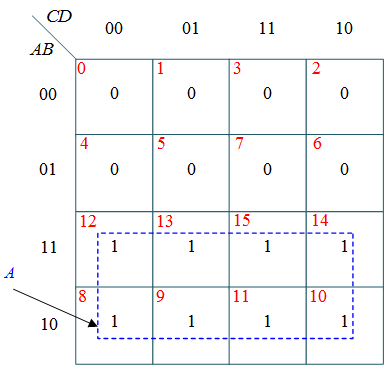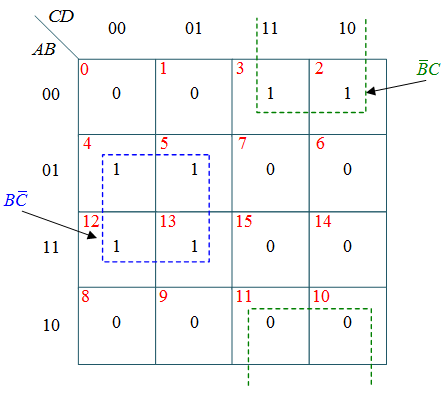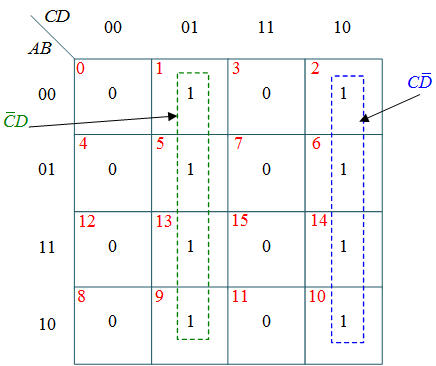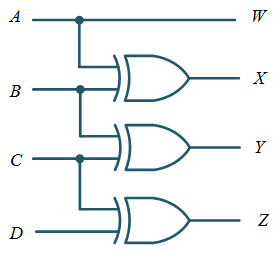In this topic, you study how to design Binary to Gray Code Converter Circuit and draw the logic diagram.
Truth table
The conversion of 4-bit input Binary code (A B C D) into the Gray code output (W X Y Z) as shown in truth table 1. The 4-bit input so 16 (${2^4}$) combinations are possible and all of them are valid so no don’t care condition.
Table 1: Binary to Gray Code Code Converter.
| Binary Code (Input) | Gray Code (Output) | ||||||
| A | B | C | D | W | X | Y | Z |
| 0 | 0 | 0 | 0 | 0 | 0 | 0 | 0 |
| 0 | 0 | 0 | 1 | 0 | 0 | 0 | 1 |
| 0 | 0 | 1 | 0 | 0 | 0 | 1 | 1 |
| 0 | 0 | 1 | 1 | 0 | 0 | 1 | 0 |
| 0 | 1 | 0 | 0 | 0 | 1 | 1 | 0 |
| 0 | 1 | 0 | 1 | 0 | 1 | 1 | 1 |
| 0 | 1 | 1 | 0 | 0 | 1 | 0 | 1 |
| 0 | 1 | 1 | 1 | 0 | 1 | 0 | 0 |
| 1 | 0 | 0 | 0 | 1 | 1 | 0 | 0 |
| 1 | 0 | 0 | 1 | 1 | 1 | 0 | 1 |
| 1 | 0 | 1 | 0 | 1 | 1 | 1 | 1 |
| 1 | 0 | 1 | 1 | 1 | 1 | 1 | 0 |
| 1 | 1 | 0 | 0 | 1 | 0 | 1 | 0 |
| 1 | 1 | 0 | 1 | 1 | 0 | 1 | 1 |
| 1 | 1 | 1 | 0 | 1 | 0 | 0 | 1 |
| 1 | 1 | 1 | 1 | 1 | 0 | 0 | 0 |
Drawing of K-map for each output
From this truth table, the K-maps are drawing shown in Figure 1, to obtain a minimized expression for each output.

(a) k-map for W

(b) k-map for X

(c) k-map for Y

(d) k-map for Z
Figure 1: k-maps for Binary to Gray Code Converter.
Minimized Expression for each output
The minimized expression for each output obtained from the K-map are given below as
$W = A$
$X = \bar A B + A \bar B = A \oplus B $
$Y = \bar B C + B \bar C = B \oplus C $
$Z = \bar C D + C \bar D = C \oplus D $
Logic Circuit Diagram
Based on the above given minimized expression for each output, a logic circuit can be drawn as shown in Figure 2.

Figure 2: Binary to Gray Code Converter logic diagram.